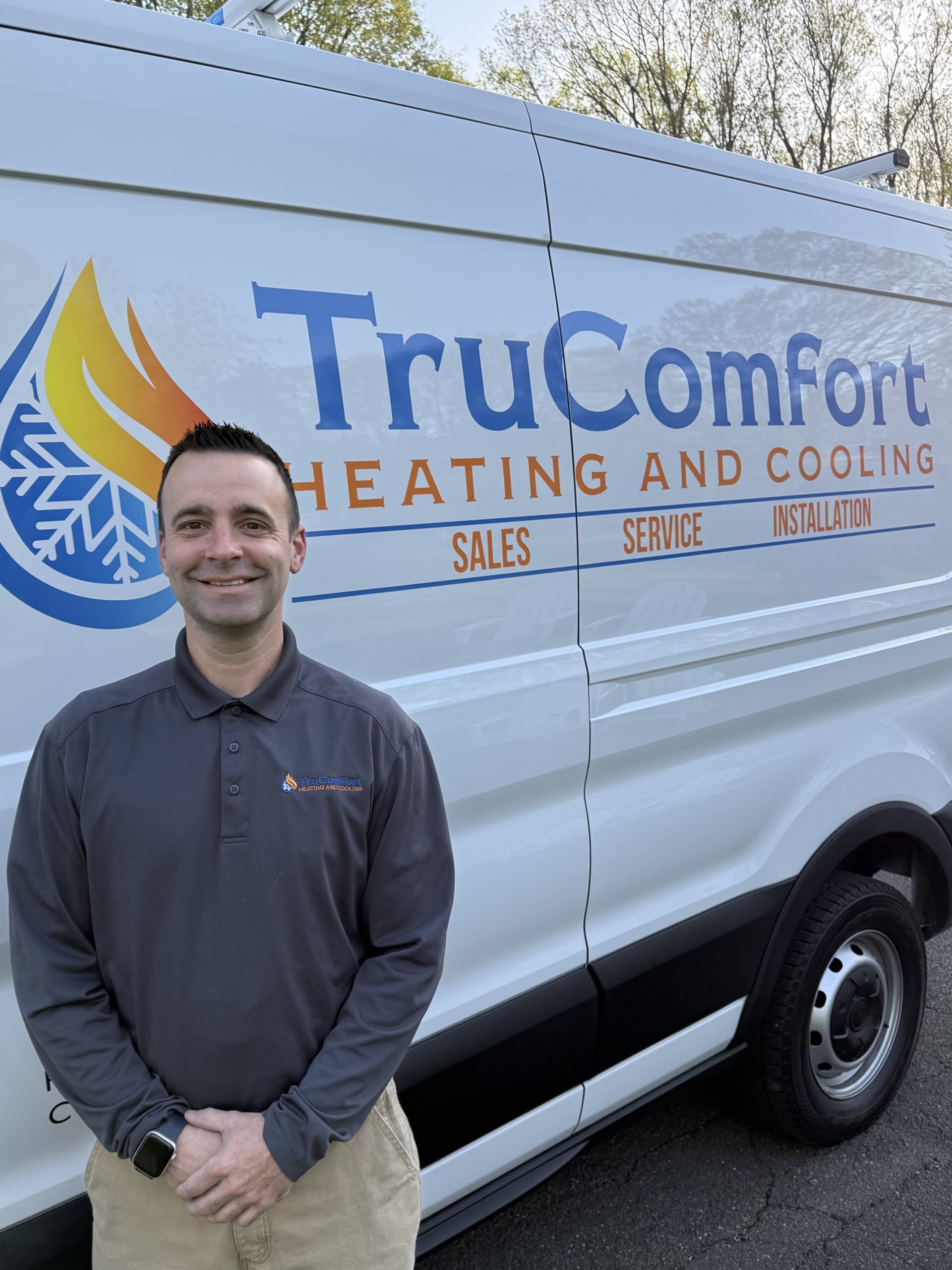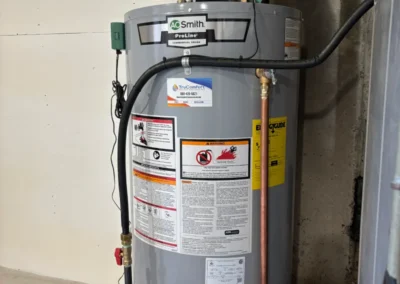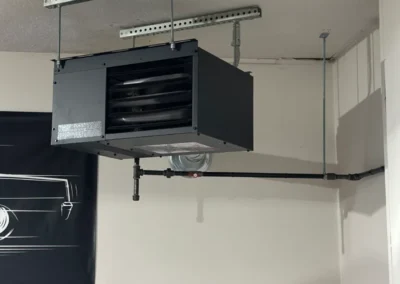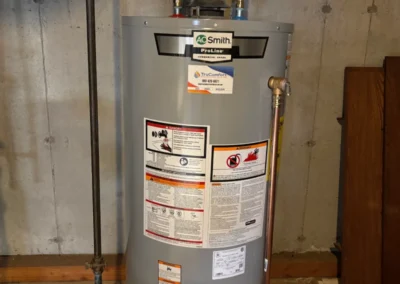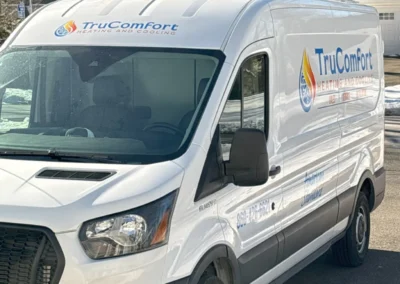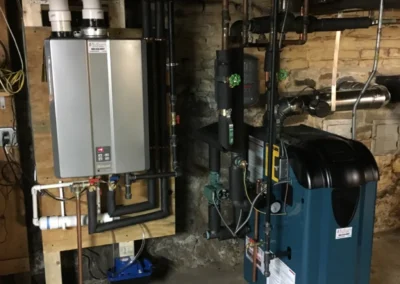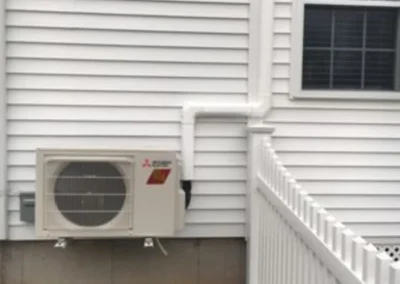Comfort You Can Count On
TruComfort Heating and Cooling Of Southington, CT
Proudly serving Southington, Cheshire, Plainville, Bristol, Avon, Farmington, West Hartford, and beyond, TruComfort Heating and Cooling delivers expert heating and cooling solutions with reliability and care. Whether you need installation, repairs, or maintenance, our team ensures your home stays comfortable year-round. Trust us for quality service, honest pricing, and exceptional workmanship in your community!
About TruComfort Heating and Cooling
At TruComfort Heating and Cooling, we’re more than just a heating and cooling company—we’re a local, family-owned business committed to keeping our community comfortable. With over 20 years of experience in the HVAC industry, we take pride in delivering personalized service, honest advice, and quality workmanship to every customer.
Learn More
As a family-run business, we understand the importance of maintaining a comfortable home throughout the year. Whether you need routine maintenance, emergency repairs, or a system upgrade, our certified technicians treat every home as if it were their own—with care, respect, and attention to detail.
Our dedication to customer satisfaction and community values sets us apart. When you choose TruComfort Heating and Cooling, you’re not just a client—you’re part of the family. Let us be your trusted partner for all your heating, cooling, and water heater needs, helping you stay comfortable in every season.
Our heating and Cooling Services
At
TruComfort Heating & Cooling, we provide expert
heating installation, repair, and
maintenance
as well as
cooling system services
in Southington, CT. Our team works on all major
HVAC systems, delivering reliable comfort,
better energy efficiency, and long-lasting
performance to keep your home running at its
best year-round.

Heating Services
Stay warm with our high-efficiency furnaces, heat pumps, and boilers. From installation to seasonal tune-ups and emergency repairs, we keep your system running smoothly.

Air Conditioning Services
Beat the heat with our reliable AC solutions. We offer professional installations, fast repairs, and energy-efficient upgrades to maximize cooling comfort.

Indoor Air Quality Services
Breathe cleaner air with our purification systems, humidity control, and ventilation improvements. Our solutions enhance indoor air quality for a healthier home.

Ductless Systems
Enjoy flexible comfort with high-efficiency ductless systems. Perfect for any space, these energy-saving solutions provide customizable temperature control.
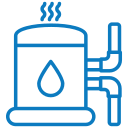
Water Heaters
Ensure a steady hot water supply with our expert water heater services. We install and replace gas, electric, tankless, and hybrid systems with same-day availability
Heating System Installation
Table of Contents
What To Expect From A Heating System Installation
Why Choose a Professional Installation
Heating system installation determines the fate of your energy bills and system lifespan before you see the first invoice. Well-executed installation delivers superior efficiency, maximizes reliability, and prevents safety risks that amateur approaches guarantee. According to Energy.gov, homes with professional installations experience up to 30% fewer equipment failures and as much as 15% lower energy usage compared to systems installed without certified oversight. Precision installation--from system sizing to venting and controls--translates to consistent indoor comfort and protects families from hazards like carbon monoxide leaks or indoor air quality issues. HVAC companies like TruComfort Heating and Cooling anchor their entire business on this principle, refusing shortcuts that inevitably sabotage performance and homeowner trust.
Typical Installation Timeline
A heating system installation is not a one-afternoon event. From initial home assessment to final system startup and walkthrough, the process generally spans three to five days for most residential projects. Site visits and load calculations take one day, followed by permits and equipment ordering. On installation days, technicians remove old equipment, fit new components, update connections, and run extensive tests before scheduling a final municipal inspection. Even with experienced crews, last-minute surprises--hidden ductwork issues or electrical quirks--can extend the process, but reputable companies communicate clearly the entire time.
Who Should Perform Work
No amount of YouTube research qualifies a homeowner to handle the complexities of heating system installation. Only licensed HVAC technicians, required by Connecticut code, have the experience to handle equipment sizing, electrical and gas connections, venting, ductwork, and compliance paperwork. Permit-backed work protects your investment and ensures your homeowner's insurance remains valid. The dangers of improper installation--from chronic system failure to fire or carbon monoxide poisoning--make hiring a certified professional an undeniable necessity for every upgrade, replacement, or new installation.
Installation Roles Comparison
Role Typical Tasks When To Choose| Homeowner (DIY) | None (not recommended) | Never |
| Independent Contractor | Equipment setup, basic connections, may neglect code, insurance compliance | Budget-limited, minor repairs only |
| Full-Service HVAC (e.g. TruComfort) | Full diagnostics, sizing, permits, warranty-eligible work, post-install support | Always for major installs and replacements |
Heating System Fundamentals
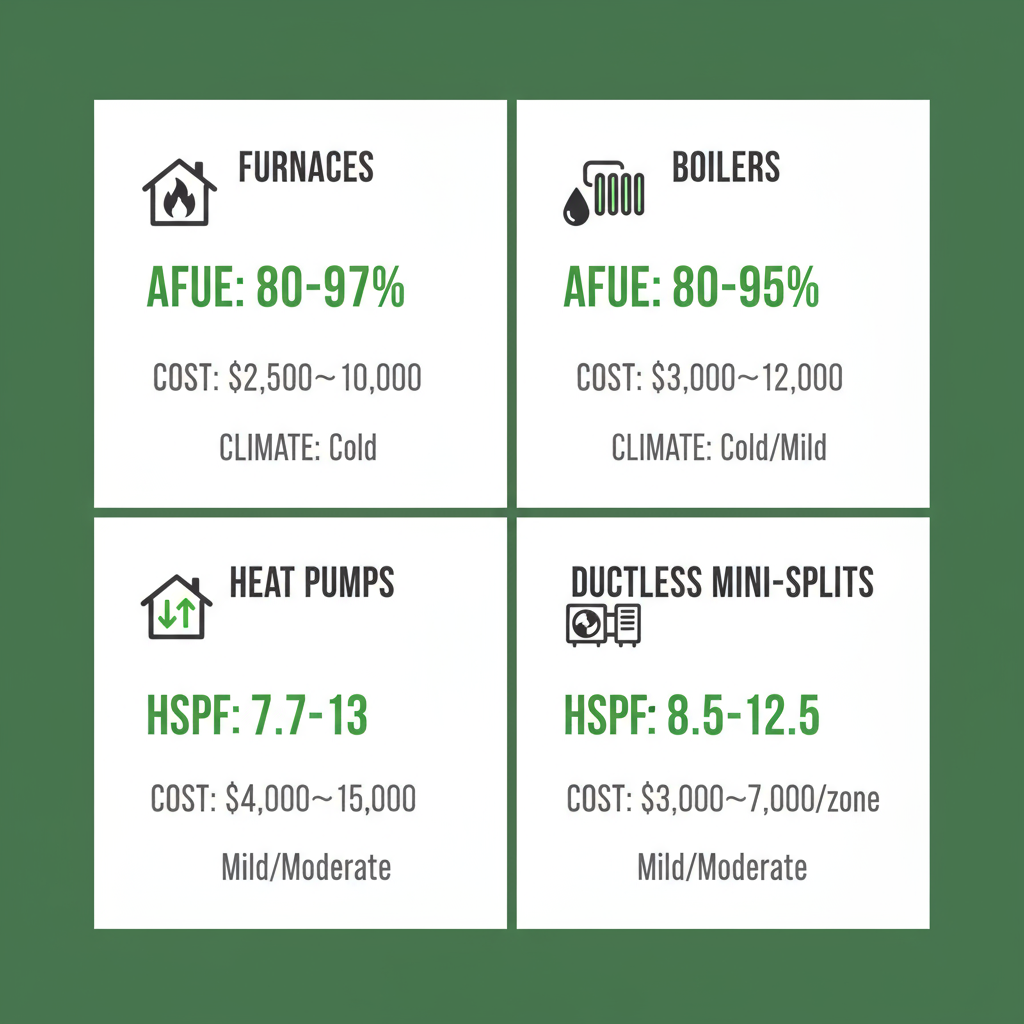
Infographic detailing common heating system types, efficiency, and ideal climates.
Common System Types
Heating systems do not belong in a one-size-fits-all world. The classic forced-air furnace ranks as the most popular choice in Connecticut, burning natural gas, propane, or oil to heat air for whole-home distribution. Boilers go a step further, using water rather than air--and delivering incredibly even heat via radiators or underfloor tubing. Heat pumps, once dismissed as "southern" appliances, now dominate high-efficiency upgrades thanks to modern cold-climate models that transfer heat indoors even during frigid Northeastern winters. Ductless mini-splits, rising stars in retrofits and additions, offer room-by-room comfort control without the cost or chaos of new ductwork--an ideal fix for older homes or tight spaces where adding ducts is a practical impossibility. Homeowners who assume central air means simplicity ignore the powerful benefits and energy savings of these new alternatives.
Sizing And Efficiency
Choosing the right system isn't about picking the highest price tag or biggest brand. Load calculations--performed by professionals--use complex formulas to assess square footage, insulation, window specs, and even sun orientation. Under-sizing leads to relentless short-cycling, cold rooms, and rapid wear; oversizing wastes energy, over-pressurizes ducts, and shortens equipment lifespan. Efficiency metrics like AFUE (for furnaces), HSPF (for heat pumps), and SEER (for cooling) are not marketing fluff--they dictate your monthly bills for a decade or more. Industry-leading units certified at 97% AFUE or above can cut annual heating costs by $300 or more compared to the outdated models still lurking in Connecticut basements.
Fuel Sources Overview
Not all fuel sources are created equal--price, practicalities, and long-term trends diverge wildly. Natural gas, where available, delivers the best combination of heating power and price predictability. Oil is fading due to high operating costs and supply volatility. Propane serves off-grid homes but at a premium; electric resistance heating, while simple to install, remains the least efficient option on a per-BTU basis. Heat pumps running on electricity now close the performance gap, especially with utility incentives and ultra-high-efficiency models designed for the harshest Northeastern cold. Homeowners who stick with outdated oil just because it's familiar are burning money--both literally and figuratively.
System Type Comparison
System Efficiency Typical Cost Best For| Furnace (Gas/Oil/Propane) | 80-98% AFUE | $3,500-$7,500 | Most single-family homes |
| Boiler | 82-95% AFUE | $5,000-$9,500 | Homes with radiant systems |
| Heat Pump | 8-12 HSPF | $4,500-$10,000 | Energy-minded or high-utility |
| Ductless Mini-Split | 15-30 SEER/HSPF | $4,000-$8,500 | Retrofits, room additions |
Installation Deep Dive
Cost Breakdown Drivers
Transparency is non-negotiable where installation costs are concerned. Connecticut homeowners routinely overpay by thousands simply because most fail to grasp the full cost breakdown. Equipment makes up 50-60% of a typical bill--furnace models alone range from $3,500 for single-stage budget units up to $8,500 for ultra-efficient variable-speed systems. Labor spans $2,000 to $4,500 depending on system complexity and accessibility. Permits, code inspections, old equipment disposal, and minor duct upgrades add another $500 to $1,500, while high-efficiency options (heat pumps, dual-fuel hybrids) come with specialty installation surcharges. Homeowners get fleeced by "all-inclusive" quotes that bury these add-ons. The only reliable way to protect yourself: demand a breakdown in writing before signing any contract.
Cost Driver Comparison
Driver Typical Range Impact Factors| Equipment | $3,500-$8,500 | Efficiency, brand, capacity |
| Labor | $2,000-$4,500 | Complexity, access, local wage rates |
| Permits & Disposal | $500-$1,500 | Town code, inspection, old system size |
| Ductwork/Upgrades | $500-$3,000 | Existing ducts, required modifications |
Ductless System Operation
Ductless mini-splits fundamentally invert the notion that ducts are necessary for whole-home comfort. Each system uses a highly efficient heat pump outside and one or more wall-mounted units inside. Refrigerant lines quietly transfer heat, allowing zoned temperature control without energy loss in drafty ducts. Installation is surgical, requiring only small-wall penetrations and compact outdoor units--often completed in less than two days. Homeowners who embrace mini-splits experience up to 40% energy savings over outdated central systems, especially when adding comfort to rooms the old system never reached.
Hybrid System Benefits
Hybrid, or dual-fuel, systems obliterate the idea that homeowners must choose between fossil fuel reliability and eco-friendly electric heat. The system switches automatically between a high-efficiency heat pump and a gas furnace, using whichever is cheaper or more efficient based on outside temperatures. This approach reduces winter energy bills by up to 30% and guarantees year-round comfort, especially in unpredictable climates like Connecticut's. Homeowners still clinging to single-fuel setups ignore decades of compounded energy savings baked into this new technology.
Practical Installation Guidance

A clear, sequential guide to the HVAC installation process.
Pre-Installation Checklist
Heating installation begins weeks before the first technician arrives. Smart homeowners insist on a comprehensive pre-assessment covering:
- Square footage, insulation levels, and window efficiency
- Existing ductwork condition and layout
- Local climate and exposure to wind or sun
- Fuel source access (natural gas, oil, propane, electrical)
- Known cold spots or comfort complaints
- Permits, code compliance, and inspection schedules
These details separate flawless installations from costly, regret-filled makeovers. Experts move beyond guessing--every decision is backed by measured data, not hustle.
Pre-Installation Checklist Comparison
Checklist Item Priority Cost Impact| Accurate Load Calculation | High | High |
| Fuel Source Assessment | High | Medium |
| Ductwork Evaluation | Medium | High |
| Permit & Code Planning | High | Low |
Selecting Equipment
Brand loyalty is a costly myth in HVAC. In reality, system capacity (measured in BTUs), verified efficiency ratings (AFUE/HSPF/SEER), and compatibility with existing ductwork or electrical are what matter. Professionals recommend multiple options matched to your needs and budget, not whatever comes off the truck next. Modern advancements--variable-speed blowers, smart thermostats, and air purification--turn the "standard replacement" into a massive quality-of-life upgrade. Ignoring tuning or overpaying for unneeded features is a lose-lose proposition. The best path: demand a three-option proposal that includes good, better, and best choices for both price and performance, as executed by leaders like TruComfort.
Permits And Incentives
Permit neglect is the shortest route to having a system red-tagged by the inspector. Connecticut requires permits for every significant heating upgrade or replacement. Inspections ensure installation quality, compliance, and protect homeowners from future insurance denial. Incentives tilt the economic balance: the High-Efficiency Electric Home Rebate Act (HEEHRA) and local utility rebates can shave thousands off upfront costs, especially for income-qualified upgrades. Contractors who can't help you maximize these benefits are bleeding your household of its rightful savings.
Advanced Considerations
Heat Pump Comparison
Heat pumps crush outdated stereotypes in Connecticut's demanding climate. Modern air-source heat pumps now match, and sometimes exceed, high-efficiency furnaces in real-world operating cost--especially with rising fossil fuel prices. Geothermal systems provide the gold standard for year-round performance, but the upfront cost rarely fits the average household. For smaller homes or those open to zoned comfort, mini-split heat pumps make central systems look archaic, both in energy consumption and installation time. Homeowners still convinced "heat pumps can't heat in winter" haven't seen what current generation systems deliver--AFUE-equivalent ratings above 350% efficiency in ideal conditions.
Heat Pump Versus Alternatives
Metric Heat Pump Gas Furnace Boiler| Typical Efficiency | 250-350% (8-12 HSPF) | 80-98% AFUE | 82-95% AFUE |
| Cold Climate Suitability | High (new models) | Very High | Very High |
| Upfront Cost | $4,500-$12,000 | $3,500-$8,500 | $5,000-$9,500 |
| Installation Complexity | Moderate | Low | Moderate |
Long-Term Performance
Longevity hinges on two things: professional installation and disciplined maintenance. A properly sized, meticulously installed Furnace Replacement easily achieves a 20+ year lifespan, while neglected systems fail after only a decade. Maintenance plans like those offered by TruComfort guarantee equipment protection through annual check-ups, filter changes, and priority repairs. Choosing higher efficiency pays for itself within five years, slashing operating costs and delivering unmatched air quality, provided homeowners commit to regular servicing. The cheaper the install, the more likely future headaches--the math is rarely in your favor if you chase the lowest bid.
Common Homeowner Questions
Typical Installation Costs
The average cost for residential heating installs in Connecticut ranges from $6,000 to $12,000, driven by system type, capacity, labor, and permit fees. Homeowners who demand detailed estimates avoid last-minute sticker shock and hidden upcharges.
Ductless Suitability
Mini-split systems excel in any home where ductwork is impractical, too costly to retrofit, or unwanted for design reasons. Century homes, new additions, and target-zone comfort needs all make ductless unbeatable for efficiency and flexibility.
Hybrid System Trade-Offs
Hybrid systems deliver efficiency and reliability, blending a heat pump's cost savings with a furnace's cold-weather punch. They cost more upfront, but energy savings--especially in fluctuating climates--offset investment in under five years for most New England homes.
Quick Comparison Table
Scenario Recommended System Why| No ducts, historic home | Ductless Mini-Split | No major renovation, targeted comfort |
| High energy costs, large open space | Heat Pump | Maximize efficiency, lower bills |
| Colder climate, budget focus | Gas Furnace | Reliable heat, moderate upfront cost |
Making The Final Decision
Steps To Move Forward
Move beyond the research cycle by scheduling a professional in-home assessment. Get a precise load calculation, then compare multiple system proposals with itemized breakdowns. Secure financing if needed for a New Furnace Cost that works in your budget, then select a reputable, local contractor for the install. Reliable companies schedule installations promptly and provide post-install support with warranty coverage and routine tune-ups.
When To Contact Pros
Obvious warning signs for calling a professional include chronic repair needs, rising utility bills with no clear cause, cold spots despite constant thermostat use, or any sign of carbon monoxide or combustion risk. In Connecticut, turning to TruComfort home ensures prompt, knowledgeable service--and access to maintenance plans, rebates, and premium equipment warranties that national chains rarely match.
For expert guidance or a tailored quote, Get a Quote from TruComfort Heating and Cooling today.
Resources
We welcome your comments!
Our Mission
Our mission is to provide reliable, energy-efficient heating and cooling solutions that ensure the comfort and safety of our customers. We are committed to delivering exceptional service with integrity, innovation, and a focus on quality workmanship. Our goal is to build long-lasting relationships with our customers by exceeding their expectations and enhancing the comfort of their homes all while maintaining a commitment to sustainability and community responsibility.
Our Value
We are dedicated to delivering exceptional service through honesty, integrity, and professionalism. Our values center on quality craftsmanship, customer satisfaction, and continuous improvement. We prioritize safety, reliability, and respect in every interaction, ensuring that every customer feels valued and every job is completed to the highest standards. We embrace innovation and sustainability, striving to provide energy-efficient solutions that enhance comfort and reduce environmental impact. Our team is committed to fostering trust and building lasting relationships with our customers and community.
Comfort Care Maintenance Plans
Protect your HVAC investment and enjoy peace of mind with our Comfort Care Maintenance Plans. We offer a plan for every budget and situation, designed to keep your system running at peak performance year-round. Regular maintenance not only extends the life of your equipment but also improves energy efficiency and prevents unexpected breakdowns.
Elite Plan
Full system cleaning added benefits, including priority service and discounts on repairs.
Essential Plan
Ideal for basic, routine check to keep your system running smoothly.
Elite Winter Plan
Tailored maintenance focused on your heating system to ensure warmth and reliability through the colder months.
Elite Summer Plan
Specialized maintenance for your cooling system to keep you cool and comfortable during the hottest months.
